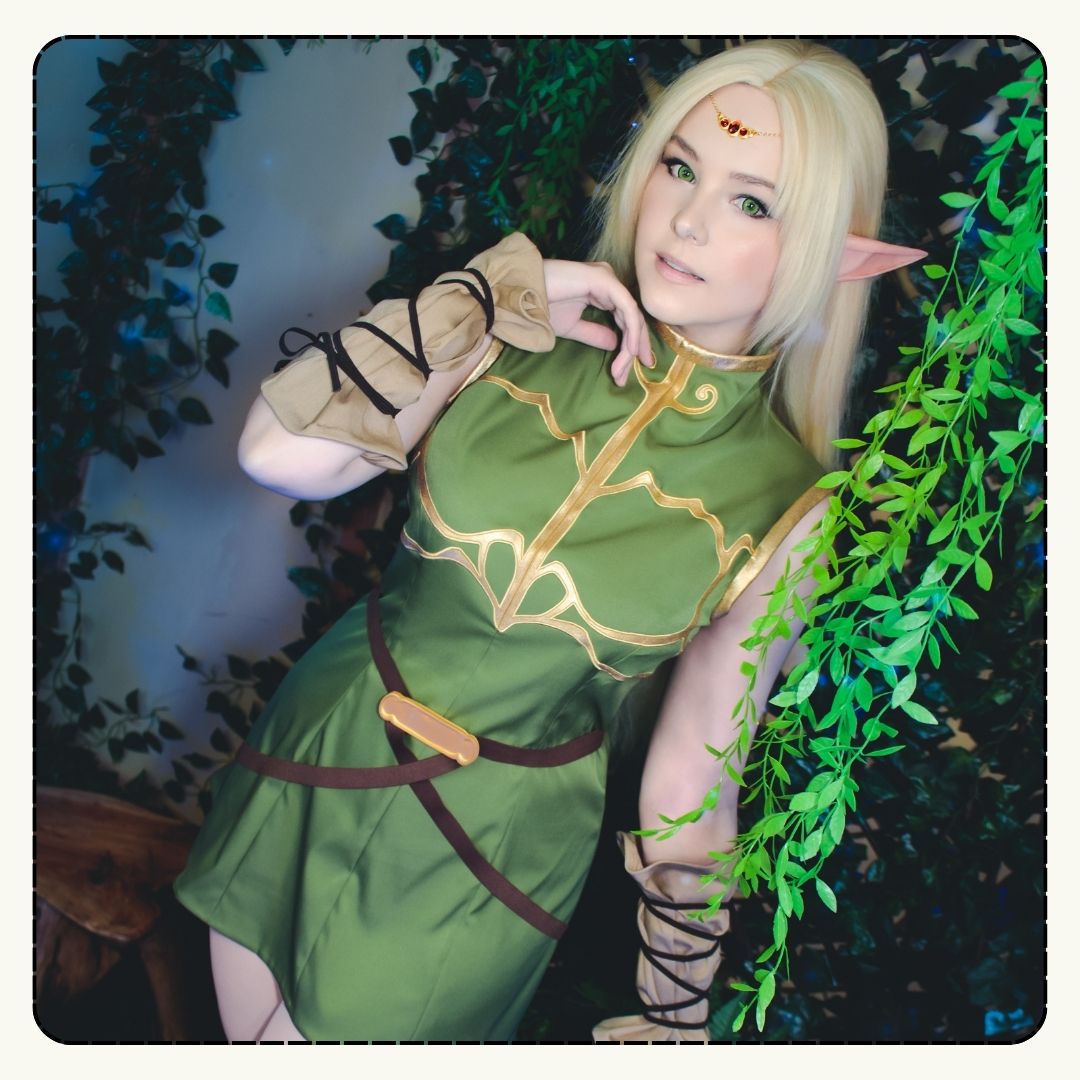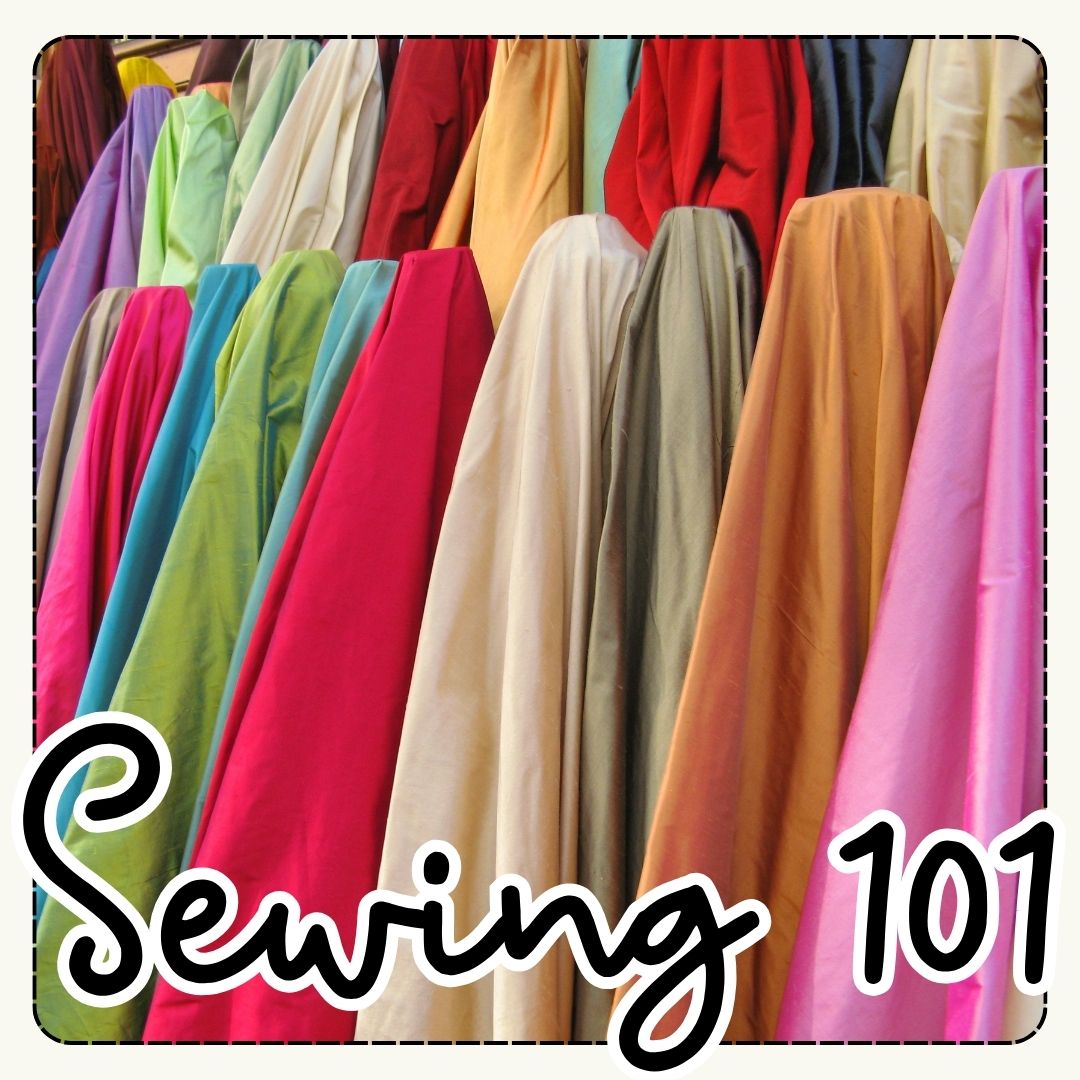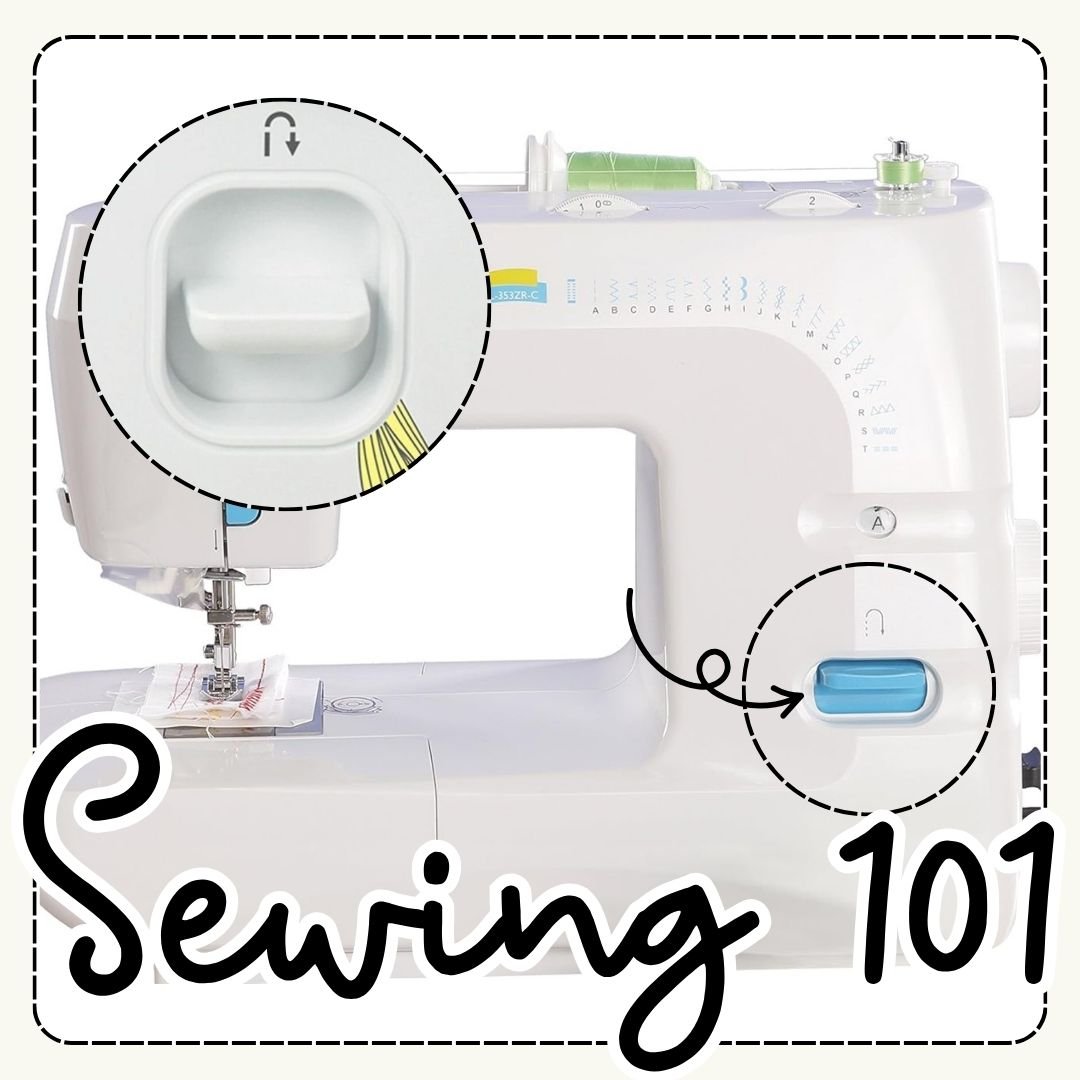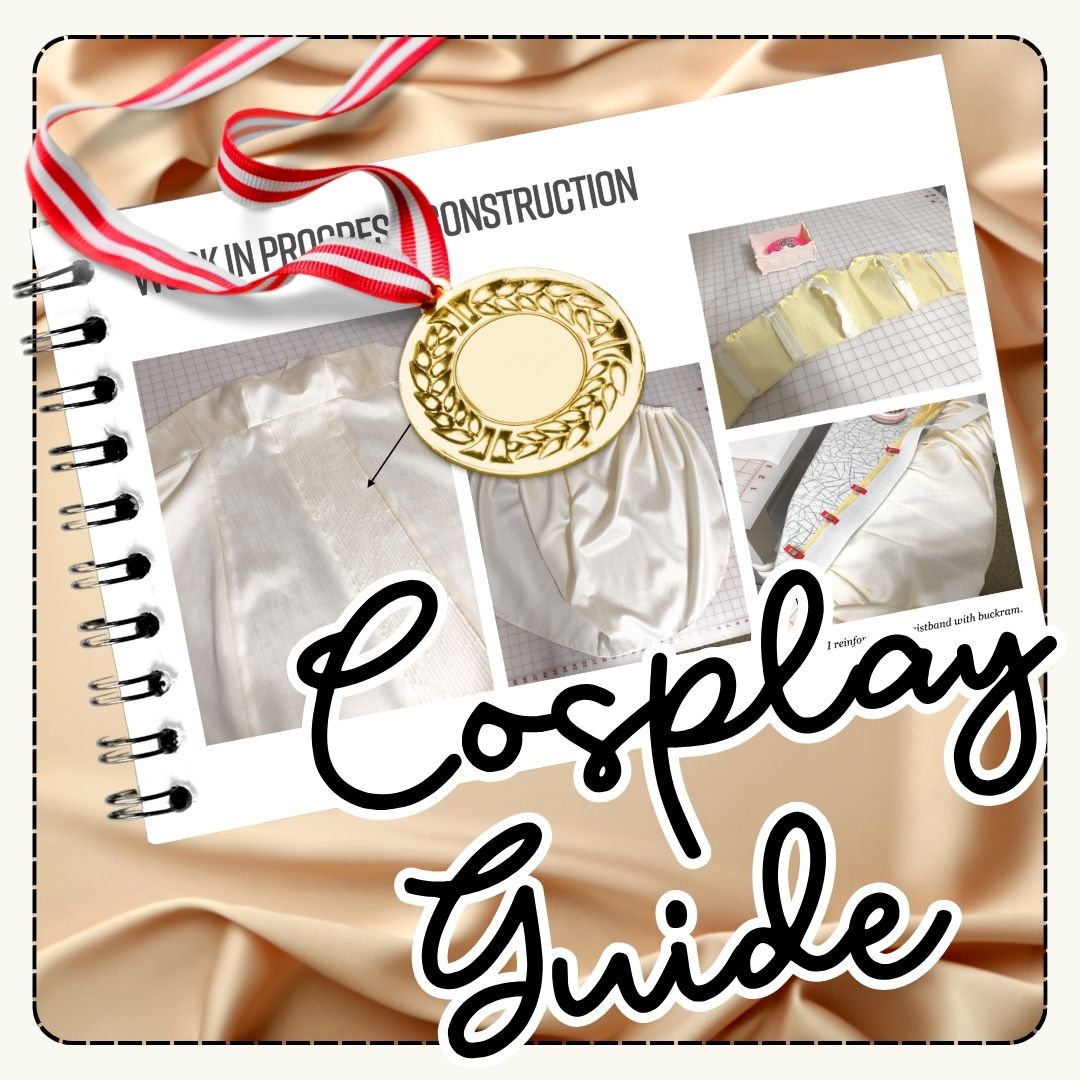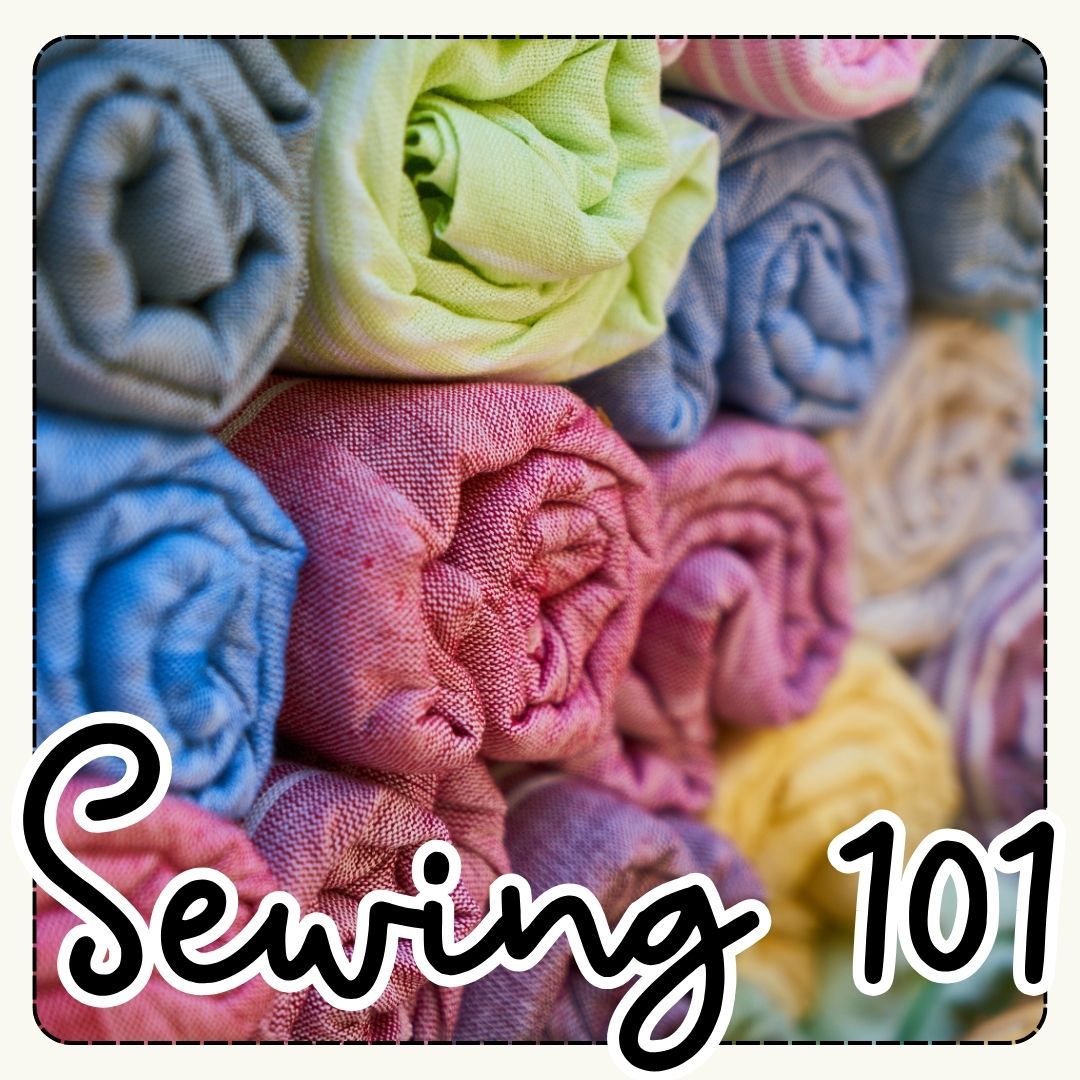One area where people struggle with sewing is understanding the basics of fabric buying. Are you in this camp? Fabric selection for any project is essential, but it can feel overwhelming when first learning to sew. This guide is here to help you understand fabric types and what to look for when shopping for your next sewing or cosplay project. This knowledge can improve your overall sewing experience. Read on for a quick introduction to fabrics!
When shopping for fabric, it's crucial to be aware of three elements:
Fiber, Weave, and Weight.
Understanding these aspects will allow you to select the right fabric for your projects.

Fiber
Fiber is the type of material the fabric is made from. Examples include cotton, silk, bamboo (tencel or rayon), polyester, spandex, wool, and linen.
Weave
Weave refers to the structure of the fabric. It describes how fibers are woven or knitted together to create a fabric. Examples are satin, broadcloth, poplin, taffeta, canvas, challis, dupioni, and linen.

Weaves are generally categorized as 'wovens' and 'knits.'
Wovens are woven fibers, and knits are knitted fibers. Knits make up most types of stretch fabrics you'll encounter. Some wovens will have stretch, too, either due to a stretchy fiber being added to the fiber blend or because the weave is constructed in a way that allows it to stretch along the 'bias' (i.e., it stretches diagonally).
Wovens made of polyester can also feature a property called 'mechanical stretch,' which allows the fabric fibers to stretch horizontally (2-way stretch) but not vertically (4-way stretch). This is due to the type of polyester yarn used. Wovens typically do not have the natural stretch that knits do. This is important to keep in mind when working with a pattern designed for knits. Most wovens won't work for those! More on that at the end of this post.
Knits have different levels of stretch due to several factors related to knit pattern and fiber, but what you really need to know is that you should keep a stretch percentage chart (like the free one linked below) and print it out so that you can check the level of stretch a knit fabric has if it isn't labeled. Some sewing patterns require high levels of stretch (50%-100%) to work.
Free Printable Stretch Chart

Weight
Weight refers to how thick & lightfast a fabric is. The weight comes down to the tightness of the weave. Generally, loosely woven or knit fabrics are lighter in weight, while densely woven or knit fabrics are heavier in weight. Looser weaves are sheer, while tight weaves are opaque. Fabric weight is measured in grams per square meter (GSM) or ounces per square yard (oz/yd²), and most fabrics will indicate this weight on the item listing or on the bolt in a retail location.
Fabric weights are also categorized into groups. Examples include ultra-lightweight, top-weight (aka lightweight), mid-weight (aka medium weight), and bottom-weight (aka heavyweight).
-
Top weights are good for 'tops,' particularly dress shirts and blouses. Examples of top weights include lawn, broadcloth, chambray, lightweight linen, shirting, and challis. These are lighter weaves that may be semi-opaque, so they work best for shirts that are not fitted. They should be used to create garments with sufficient styling ease, so that the garment does not hug the body, or for garments worn under other layers, such as under a blazer. ('Styling ease' refers to the extra space added to a garment's pattern to create a specific silhouette or fit.) This is because you can see through top-weight fabrics to a certain degree, so they are not well-suited for fitted shirts.
- Medium-weight weaves encompass a broad category that includes poplins, sateen, crepe de chine, satins, taffeta, and linen, among others. Most materials for clothing items like dresses will fall into this category, but some dress fabrics will border on top-weight. More on that later!
-
Bottom-weight weaves tend to be twills, types of denim, corduroy, suiting, canvas, and heavy linens. You can also find bottom-weight knits, like ponte de roma and scuba knits. These are perfect for pants and skirts because they are fully opaque fabrics. They are also used for outerwear, such as jackets, blazers, vests, and coats.
All the examples here are, of course, generalized. Many more types of fabric are available than the ones I've listed here, and weave types often fall into multiple weight categories.
Lining Fabrics
It is common to be confused by the difference between outer 'fashion fabrics' and 'lining fabrics' when you first start making garments. Whether a fabric can be used as a lining and whether you even need a lining for a project typically depends on the fabric's weight. Broad strokes here: Top weights can be used for lining a garment and will need lining if used for the outside shell of a fitted garment.
If you are lining portions of a garment, you can get away with using fabrics labeled top weight for both the outer 'fashion fabric' and 'lining fabric.' Additionally, many lighter fabrics marked as suitable for making dresses, for example, will require lining. To avoid needing to line the upper portions of a dress or shirt, look at the grams per square meter (GSM) or ounces per square yard (oz/yd²) listed on the fabric and stick to ones starting in the ballpark of 170 GSM (5 oz/yd²) and heavier, if you are shopping online.
If you shop in person, holding the fabric up to a light source can give you a good idea of how opaque the material will be. The more light that passes through it, the more likely you'll need to line it. Similarly, if you can see your hand through it, it is usable but must have a lining wherever it directly touches the body. Ideally, you'll want to look for a totally or nearly opaque fabric, where you can barely see your hand through it if you want to avoid needing a lining.
Fabric Tips
There are a few more suggestions I want to throw out there before concluding this rundown of fabrics:
-
When shopping for fabric, it is essential to specify the weave type you need before selecting the fiber type or weight. 'I want to make this out of thin cotton' is perhaps too general to be useful. Many different fabric weaves can be made of cotton, as it is a fiber type, so if you search for 'cotton fabric' or even 'thin cotton fabric,' you could be searching for days. If, however, you specify the weave, i.e., 'I want to make this out of lawn or muslin, ' you will narrow down your search to usable results. You can refine your search from there by adding a fiber type or GSM. Think of weave as the primary characteristic for your search. AKA weave has main character energy, while fiber and weight give sidekick vibes.
-
For garments with gathering, I recommend sticking to light and medium-weight fabrics. This will make gathering the fabric easier. Very thick fabrics, such as canvas, denim, or corduroy, can be challenging to gather.
-
Some fabrics, like velvet, require basting together by hand before sewing on a machine, as the pile of the fabric (the fuzziness) can rub against each other and work the two pieces of material apart as you sew. Trust me, it's not optional. Nothing will make you want to quit sewing harder than unbasted velvet. Save velvet for when you have additional time to complete your project, as this extra step will require more time.
-
Some fabrics fray more than others. Fraying is the process of unraveling that occurs along a cut. Fabrics prone to fraying (e.g., dupioni or chiffon) will be harder to work with. For this reason, I don't suggest starting out working with materials that fray easily. Save those for projects when you are ready to learn to finish seams (e.g., French Seams, Overlocking, Pinking, etc.).
-
Fabrics on either end of the thick or thin divide will be harder to work with than fabrics in between these extremes. Very sheer, lightweight materials can be chewed by your machine's feed dogs and needles, so they need more consideration when working with them. Very thick materials, such as faux leather or thick denim, are also challenging. Feeding vinyl through the machine without a Teflon foot can be tricky, and every puncture hole in the vinyl is permanent. Just like with velvet or fray-prone fabrics, I recommend holding off on projects that require these types of materials until you have some experience under your belt or the time to dedicate to preparatory work.
-
Once you are more familiar with working with fabrics, you'll want to learn about 'drape' and how it impacts the clothes you make. Drape refers to the way in which the fabric 'drapes' over a three-dimensional form. When starting out, this isn't a big thing you need to focus on, but learning about drape will help you level up your skills as a crafter over time. Every fabric has its own unique way of draping, and selecting fabrics based on this is a skill that can be developed through experience working with various materials.
-
You can use just about any weave of fabric to make a garment, as long as you first consider:
-
The general weight group of the fabric
-
If the sewing pattern is designed for wovens or knits
-
A rule of thumb is that you can use knits to make a sewing pattern designed for wovens, but you can't use wovens to make sewing patterns designed for knits. This is due to ease. Patterns designed for woven fabrics have a feature called 'wearing ease' built into them, meaning extra room has been added to the pattern beyond the base body measurements. This ease allows for body movement. If the pattern were made to your exact measurements with a woven fabric, you would not be able to bend your joints or take deep breaths when wearing the finished garment.
-
Patterns designed for knits often utilize a technique called 'negative ease.' This means the pattern either lacks any wearing ease or is patterned slightly smaller than the body measurements to create a skin-tight fit, which the knit fabric must stretch to accommodate. It will be too small to wear if you use a woven fabric, especially one without sufficient blended or mechanical stretch, when paired with a sewing pattern designed for knits. This is a mistake that many beginners make at least once, so don't feel bad if this has happened to you.
-
The prior two points are why using the fabric recommendations included with a pattern is a good idea until you are familiar enough with fabrics to know when and where you can substitute materials. This is something that can take a few years to master.
-
If you are still new to selecting fabrics but are unable to acquire any of the recommended fabrics for your pattern, a good tactic is to search for the types of fabric the pattern suggests on Google. Find out what they have in common in terms of weave and GSM weight. Once you know the weave and weight categories the fabrics fall into, you can then search for similar fabrics within that range. For example, if your pattern calls for using Ponte, a Google search would reveal that it is a knit fabric with a GSM range of 300-400. Searching for 'knit fabric 300 GSM' will help you find a substitute, such as Scuba Knit, as both are knits in the 300-400 GSM range.
Proficiency in sewing requires absorbing a significant amount of information, encompassing everything from construction techniques to geometry. It is impossible to learn everything there is to know overnight, but you can add a lot of useful value to your knowledge base right away by learning the basics of fabric selection.
Happy Sewing!

(We are consolidating our blogs! A previous version of this post was first posted to Maridah.Blog on January 16th, 2025.)


